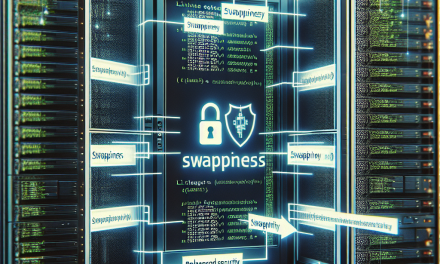Command history files are essential for tracking the activities performed by users on Linux systems. However, they can also expose sensitive information, such as passwords, API keys, or other confidential command-line arguments. To enhance security on your Linux servers, it’s crucial to implement best practices for managing command history files effectively. This article outlines actionable strategies to secure these files and ensure that sensitive information remains protected.
Understanding Command History
By default, Linux systems maintain a history of commands executed by users in a history file, typically located at ~/.bash_history for users of the Bash shell. This feature can be valuable for auditing and troubleshooting but can also pose a security risk if not managed properly.
Risks Associated with Command History Files
- Exposure of Sensitive Data: Commands stored in history files may include passwords, usernames, or connection strings.
- User Tracking: Attackers who gain access to a server may inspect history files to understand user behavior and exploit any vulnerabilities.
- Unintentional Disclosure: Users might inadvertently include sensitive information in commands that later become part of the history.
Best Practices for Securing Command History Files
1. Limit History Size and Lifespan
Configuring the size and lifespan of command history files can help mitigate the risk of sensitive data exposure. Adjust the following environment variables within user profiles to limit history size:
# Limit the number of commands stored in history
HISTSIZE=1000
HISTFILESIZE=2000This will limit the number of lines retained in the command history, reducing the potential exposure of sensitive data.
2. Exclude Sensitive Commands from History
You can instruct the shell to ignore certain commands by appending them to the HISTIGNORE variable. This is particularly useful for commands that include sensitive information (e.g., SSH keys, password commands).
export HISTIGNORE="ssh:*:exit:logout:passwd"This configuration prevents common commands that may reveal sensitive information from being logged.
3. Use Secure Temporary Files for Secrets
Instead of entering sensitive information directly in the command line, consider using secure methods to handle them, such as environment variables or temporary files with restricted permissions. Ensure these files are not written to command history.
# Example of creating a temporary file to store sensitive data
echo "your_api_key" > /tmp/api_key.txt
chmod 600 /tmp/api_key.txt4. Regularly Clear Command History
Implement a routine to clear command history files periodically. This can be accomplished using the history command or by configuring cron jobs to automate it:
# Clear history
history -cAdd this command to a cron job to run at desired intervals, ensuring sensitive information does not persist.
5. Set Permissions on History Files
Restrict access to command history files to ensure only authorized users can read them. Use file permissions to limit access effectively:
chmod 600 ~/.bash_historyThis way, only the respective user can read the history file, improving security.
6. Use Session Logging
For greater transparency and security, consider using session logging tools such as script or auditd. These tools provide comprehensive logs of user sessions, capturing all terminal activities without exposing sensitive data in the history file.
7. Educate Users on Safe Practices
User education is crucial. Train users about the risks associated with command history and provide guidelines on how to handle sensitive commands appropriately. Encourage practices such as using environment variables when possible and avoiding entering sensitive data directly into the command line.
8. Implement Shell Restrictions
If applicable, enforce system-wide restrictions by configuring the shell to prevent storing any command history at all:
set +o historyUse this with caution, as it may hinder user capabilities. Consider this option for highly sensitive or restricted environments.
Conclusion
Securing command history files is a vital aspect of maintaining the overall security posture of Linux servers. By limiting history file size, excluding sensitive commands, using secure methods for handling secrets, and employing appropriate access controls, you can significantly reduce the risk of exposing confidential information. Combining these best practices with user education creates a more secure environment, safeguarding your systems against potential vulnerabilities. Implement these strategies to enhance the security of your Linux servers and protect critical data from unauthorized access.
By actively managing command history files and promoting a culture of security awareness, you can ensure that your Linux environment remains resilient in the face of evolving threats.
Feel free to share this article on your blog and help educate your audience about the importance of securing command history files!





